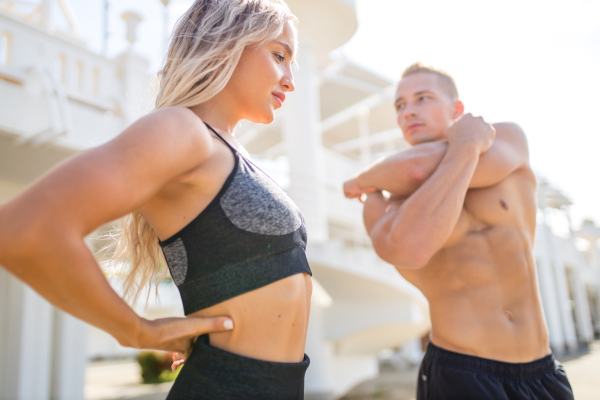- Your country
- Europa
-
- Amstetten(7)
- Bad Schallerbach(1)
- Baden(4)
- Berg(1)
- Braunau am Inn(5)
- Bregenz(3)
- Bruck an der Mur(1)
- Graz(4)
- Hartberg(1)
- Innsbruck(5)
- Kemmelbach(1)
- Kitzbühel(4)
- Klagenfurt(5)
- Krems an der Donau(1)
- Kufstein(5)
- Leibnitz(1)
- Lienz(1)
- Liezen(1)
- Linz(5)
- Oetz(1)
- Punitz(1)
- Radstadt(1)
- Salzburg(5)
- St Polten(2)
- Steiermark(1)
- Steyr(1)
- Steyregg(1)
- Traun(3)
- Vienna(30)
- Villach(5)
- Völkermarkt(1)
- Wels(5)
- Wien(1)
- Wiener Neustadt(4)
-
- Aalst(1)
- Aarschot(2)
- Affligem(1)
- Anderlecht(5)
- Antwerp(11)
- Antwerpen(1)
- Arlon(6)
- Ath(2)
- Aubange(5)
- Bastogne(2)
- Blankenberge(1)
- Bruges(5)
- Brussels(24)
- Charleroi(5)
- Deinze(3)
- Dendermonde(1)
- Diest(2)
- Etterbeek(5)
- Geel(1)
- Genk(5)
- Gent(8)
- Geraardsbergen(1)
- Grimbergen(2)
- Hasselt(5)
- Heusden- Zolder(2)
- Ieper(1)
- Izegem(1)
- Knokke(4)
- Kortrijk(3)
- La Louviere(2)
- Leuven(5)
- Liege(4)
- Limburg(4)
- Lommel(1)
- Mortsel(1)
- Oostende(1)
- Turnhout(1)
-
- Chelyabinsk(1)
- Dubna(4)
- Gelendzhik(1)
- Irkutsk(1)
- Kaliningrad(1)
- Kazan(4)
- Krasnodar(3)
- Krasnoyarsk(1)
- Maykop(1)
- Moscow(53)
- Nizhny Novgorod(4)
- Novosibirsk(1)
- Omsk(1)
- Penza(1)
- Rostov-on-Don(2)
- Saint Petersburg(13)
- Samara(1)
- Saratov(1)
- Serpukhov(2)
- Sevastopol(3)
- Sochi(5)
- Stavropol(1)
- Surgut(1)
- Tyumen(2)
- Ufa(2)
- Vladivostok(3)
- Yekaterinburg(11)
-
- Alicante(12)
- Barcelona(141)
- Benalmadena(1)
- Benidorm(7)
- Castellón de la Plana(1)
- Denia(1)
- Estepona(1)
- Fuengirola(4)
- Ibiza(54)
- Jerez de la Frontera(1)
- Lanzarote(1)
- Las Palmas de Gran Canaria(5)
- Madrid(79)
- Malaga(10)
- Marbella(55)
- Murcia(1)
- Oviedo(1)
- Palma de Mallorca(55)
- Puerto Banus(3)
- Seville(1)
- Tarragona(1)
- Tenerife(10)
- Torrevieja(6)
- Valencia(10)
- Vigo(1)
- Zaragoza(1)
- Worldwide
Categories
Exploring Hot Workouts: Types, Benefits, and Precautions
 Delving into the world of hot workouts reveals a unique exercise experience designed around elevated humidity and temperatures of around 35°C (95°F). This article covers the essentials of hot workouts, including their types, benefits, and who should avoid them.
Delving into the world of hot workouts reveals a unique exercise experience designed around elevated humidity and temperatures of around 35°C (95°F). This article covers the essentials of hot workouts, including their types, benefits, and who should avoid them.Understanding Hot Workouts
Hot workouts are fitness sessions conducted in rooms with high humidity (40-50%) and temperatures of approximately 35°C (95°F). These conditions simulate a sauna-like environment, making muscles less prone to stress and injury during exercise. The intense atmosphere demands full attention to bodily movements, enhancing the mindfulness and effectiveness of the workout.
Benefits of Hot Workouts
Engaging in hot workouts offers several advantages:
Increased Sweating: The heat promotes excessive sweating, aiding in toxin removal and metabolic enhancement.
Enhanced Flexibility: Warm muscles, joints, and ligaments stretch more easily, reducing the risk of injuries.
Improved Circulation: Higher temperatures dilate blood vessels, boosting circulation and the efficiency of the workout.
Fat Burning: The heat can increase calorie burn, aiding in weight loss.
Versatility for All Ages: Hot workouts cater to both men and women of various ages, offering a range of activities from relaxation to intense strength training.
Types of Hot Workouts
There are multiple hot workout formats, each with its unique features and benefits. Here are some popular ones:
Hot Yoga: Practicing yoga in a heated room, whether it's Hatha or Kundalini, enhances flexibility and deepens the yoga practice.
Hot Pilates: This aerobic exercise focuses on core strength, posture improvement, calorie burning, and body sculpting.
Hot HIIT: High-Intensity Interval Training combines cardio and strength exercises, improving overall fitness and shedding extra pounds.
Hot Cycling: Intense cardio sessions on stationary bikes increase calorie burn through excessive sweating, enhancing endurance and leg strength.
Hot Barre: Merging ballet, yoga, and Pilates elements in a heated room, this workout strengthens muscles, improves flexibility, and corrects posture by engaging deep muscle groups.
Hot Dance: Combining various dance styles like Latin, hip-hop, and contemporary, these sessions offer a dynamic workout that enhances muscle strength, coordination, and body tone.
Precautions and Contraindications
Despite their benefits, hot workouts can pose risks, including overheating and dehydration. It is crucial to be aware of the following contraindications:
Acute illnesses with high fever
Pregnancy
Tendency towards heavy bleeding
Generalized atherosclerosis
Active tuberculosis
Malignant and benign tumors, or suspicions of such
Unstable diabetes with high acidity levels
Varicose veins
Acute thrombosis and arterial hypertension
Use of specific medications like diuretics, barbiturates, beta-blockers, and antihistamines
Before embarking on a hot workout regimen, consulting a healthcare professional is essential. Choose a reputable studio, monitor your body's responses, and perform exercises within your comfort zone. Additionally, maintaining adequate hydration is critical.
news
More news- Your country
- Europa
-
- Amstetten(7)
- Bad Schallerbach(1)
- Baden(4)
- Berg(1)
- Braunau am Inn(5)
- Bregenz(3)
- Bruck an der Mur(1)
- Graz(4)
- Hartberg(1)
- Innsbruck(5)
- Kemmelbach(1)
- Kitzbühel(4)
- Klagenfurt(5)
- Krems an der Donau(1)
- Kufstein(5)
- Leibnitz(1)
- Lienz(1)
- Liezen(1)
- Linz(5)
- Oetz(1)
- Punitz(1)
- Radstadt(1)
- Salzburg(5)
- St Polten(2)
- Steiermark(1)
- Steyr(1)
- Steyregg(1)
- Traun(3)
- Vienna(30)
- Villach(5)
- Völkermarkt(1)
- Wels(5)
- Wien(1)
- Wiener Neustadt(4)
-
- Aalst(1)
- Aarschot(2)
- Affligem(1)
- Anderlecht(5)
- Antwerp(11)
- Antwerpen(1)
- Arlon(6)
- Ath(2)
- Aubange(5)
- Bastogne(2)
- Blankenberge(1)
- Bruges(5)
- Brussels(24)
- Charleroi(5)
- Deinze(3)
- Dendermonde(1)
- Diest(2)
- Etterbeek(5)
- Geel(1)
- Genk(5)
- Gent(8)
- Geraardsbergen(1)
- Grimbergen(2)
- Hasselt(5)
- Heusden- Zolder(2)
- Ieper(1)
- Izegem(1)
- Knokke(4)
- Kortrijk(3)
- La Louviere(2)
- Leuven(5)
- Liege(4)
- Limburg(4)
- Lommel(1)
- Mortsel(1)
- Oostende(1)
- Turnhout(1)
-
- Chelyabinsk(1)
- Dubna(4)
- Gelendzhik(1)
- Irkutsk(1)
- Kaliningrad(1)
- Kazan(4)
- Krasnodar(3)
- Krasnoyarsk(1)
- Maykop(1)
- Moscow(53)
- Nizhny Novgorod(4)
- Novosibirsk(1)
- Omsk(1)
- Penza(1)
- Rostov-on-Don(2)
- Saint Petersburg(13)
- Samara(1)
- Saratov(1)
- Serpukhov(2)
- Sevastopol(3)
- Sochi(5)
- Stavropol(1)
- Surgut(1)
- Tyumen(2)
- Ufa(2)
- Vladivostok(3)
- Yekaterinburg(11)
-
- Alicante(12)
- Barcelona(141)
- Benalmadena(1)
- Benidorm(7)
- Castellón de la Plana(1)
- Denia(1)
- Estepona(1)
- Fuengirola(4)
- Ibiza(54)
- Jerez de la Frontera(1)
- Lanzarote(1)
- Las Palmas de Gran Canaria(5)
- Madrid(79)
- Malaga(10)
- Marbella(55)
- Murcia(1)
- Oviedo(1)
- Palma de Mallorca(55)
- Puerto Banus(3)
- Seville(1)
- Tarragona(1)
- Tenerife(10)
- Torrevieja(6)
- Valencia(10)
- Vigo(1)
- Zaragoza(1)
- Worldwide
















